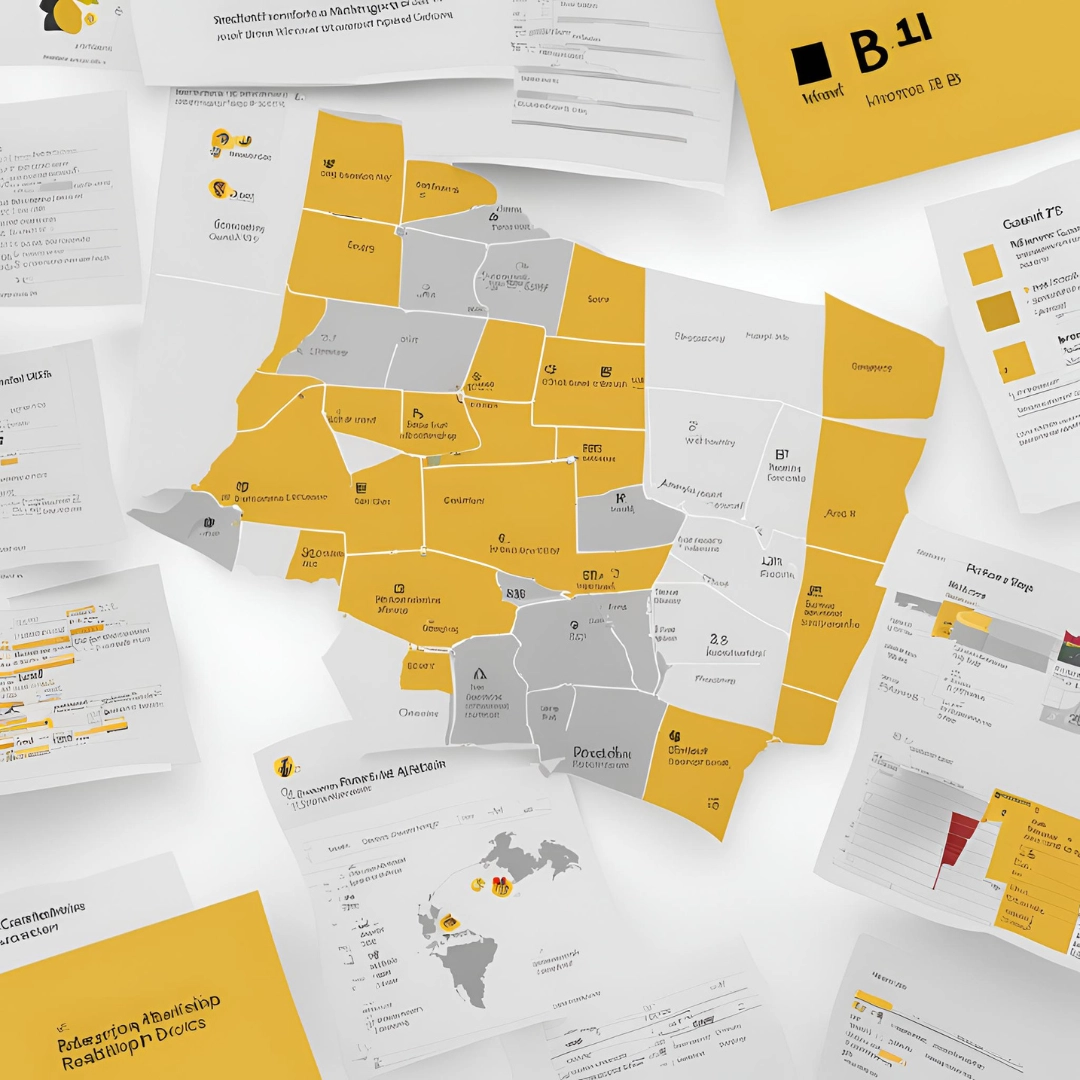Relationship Cardinalities in Power BI: What You Need to Know
Welcome Greetings from ARTIFICALAB LTD!
In this article, we will be going to explore the topic of relationship cardinalities in Power BI. If you are a beginner, I suggest you to study this article since it will be essential for building a strong foundation in your Power BI skills.

"Understanding Data Modeling in Power BI is so essential for learners and beginners. I strongly agree that learners should be able to handle relationship cardinalities, as well as understanding key schemas, so that they are capable of any project they encounter in future!"
— Mr. Thu Ta Naing, Founder & CEO (ARTIFICALAB LTD), PL-300 Certified Power BI Data Analyst
What Does Relationship Cardinality Actually Mean?
Relationship cardinality in Power BI refers to the nature of the relationships between tables in your data model. It defines how many instances of one entity relate to instances of another entity. Understanding cardinality is crucial because it impacts how data is joined and how queries are executed in your reports.
How Many Relationships Can We Create in Power BI Model View?
In Power BI, you can create multiple relationships between tables in the Model View. These relationships can be of different types, such as one-to-many, many-to-one, and many-to-many. Each type of relationship serves a specific purpose and is used based on the data structure and the analysis requirements.
Types of Relationships and Real-World Use Cases
As for now, here are relationship types you should know and could be applied in your Power BI Data Model! Let's explore for now! The first one starts with One-to-Many Relationship.
1. One-to-Many (1:*):
Example: A sales database where each customer can have multiple orders.
Use Case: This type of relationship is used when a single record in one table is associated with multiple records in another table. For instance, linking a Customers table to an Orders table.
2. Many-to-One (*:1):
Example: Multiple orders linked to a single product.
Use Case: This is essentially the reverse of a one-to-many relationship and is used when multiple records in one table are associated with a single record in another table.
3. Many-to-Many (:):
Example: Students enrolled in multiple courses, and each course having multiple students.
Use Case: This relationship is used when multiple records in one table are associated with multiple records in another table. It requires a bridge table to manage the relationships effectively.
Why Understanding Relationships is Important in Power BI
Understanding relationships in Power BI is vital because it directly impacts your data model schema and your reports' accuracy. Properly defined relationships ensure that data is correctly aggregated and displayed, leading to more accurate insights. Misunderstanding or incorrectly setting up relationships can lead to incorrect data representation and flawed analysis.
Here are some of the following additional several reasons you should note down on the importance of relationships in your Power BI Project!
1. Accurate Data Representation
Relationships in Power BI define how tables are connected and how data flows between them. Properly defined relationships ensure that data is accurately represented in your reports. For example, if you have a Customers table and an Orders table, a one-to-many relationship between these tables ensures that each customer is correctly associated with their respective orders. Without this relationship, you might end up with incorrect aggregations or mismatched data.
2. Efficient Data Modeling
Efficient data modeling relies on correctly understanding and implementing relationships. When relationships are properly set up, Power BI can optimize query performance, leading to faster data retrieval and processing. This is particularly important when dealing with large datasets, as efficient relationships can significantly reduce the time it takes to generate reports and dashboards.
3. Simplified Data Analysis
Understanding relationships simplifies data analysis by allowing you to create more intuitive and meaningful reports. For instance, with a clear understanding of relationships, you can easily create measures and calculated columns that accurately reflect the underlying data. This makes it easier to perform complex analyses, such as calculating customer lifetime value or analyzing sales trends over time.
4. Enhanced Data Integrity
Relationships help maintain data integrity by enforcing rules about how data in one table relates to data in another. For example, a one-to-many relationship ensures that each record in the “one” table is associated with one or more records in the “many” table, but not the other way around. This prevents data anomalies and ensures that your data remains consistent and reliable.
5. Improved Data Visualization
Properly defined relationships enhance data visualization by enabling more accurate and insightful visual representations. When relationships are correctly set up, Power BI can automatically generate visualizations that reflect the true nature of the data. This allows you to create more effective and informative charts, graphs, and dashboards that provide deeper insights into your data.
6. Facilitates Complex Data Models
In many real-world scenarios, data models can be quite complex, involving multiple tables with various types of relationships. Understanding these relationships is essential for building and maintaining such complex models. It allows you to create bridge tables, manage many-to-many relationships, and ensure that all data connections are logically sound and efficient.
7. Supports Advanced Analytics
Advanced analytics, such as predictive modeling and machine learning, often require a deep understanding of the relationships within your data. By correctly defining and understanding these relationships, you can ensure that your advanced analytics models are based on accurate and relevant data, leading to more reliable and actionable insights.
8. Ensures Scalability
As your data grows, the complexity of your data model can increase. Understanding relationships helps ensure that your data model is scalable and can handle increased data volume and complexity without compromising performance or accuracy. This is crucial for maintaining the long-term viability of your Power BI solutions.
Data Modeling Best Practices You Should Know!
Now you understand that data modeling is a critical aspect of creating efficient and effective data structures for analysis and reporting. Here are some best practices to consider:
1. You should start your power bi data model with clear requirements
Before you begin data modeling, I suggest that you completely understands the business requirements. From knowing what questions need to be answered and what data is necessary involved as well!
2. Prioritize Data Integrity
When you prepare your power bi data model, please make ensure that your data model still maintains data integrity. What I mean is that you should setup constraints and rules to prevent invalid data from entering the system. For example, try to use primary keys, foreign keys, and unique constraints to maintain data accuracy.
3. Consider Normalization in your Power BI Data Model
You should also understand the key processes of Normalization as much as possible, including 1st Normal Form, 2nd Normal Form, and 3rd Normal Form.
This is essential because Normalization normally involves organizing data to reduce redundancy and improve data integrity. However, the drawback is that over-normalization can lead to complex queries and performance issues. It is wise to strive for a balance where the data is normalized enough to avoid redundancy but denormalized enough to ensure performance.
4. Consider maintaining Consistency in Naming Conventions
By using consistent naming conventions for tables, columns, and other database objects, you and other Power BI Data Analyst in your team could easily understand and maintain. For example, use singular nouns for table names and follow a consistent pattern for column names.
5. Don't forget to do Documentation as You Work Along
It is never a bad idea to document your data model as you build it. This includes descriptions of tables, columns, relationships, and any business rules applied. Proper documentation helps others understand the model and ensures continuity if someone else needs to work on it.
6. Try to Reuse and Standardize Components
Where possible, reuse existing data structures and standardize components. This reduces redundancy and ensures consistency across the data model. For example, use standardized date dimensions or common lookup tables.
7. Do Regularly Validate and Review
Regularly validate your data model against the business requirements and review it for any potential improvements. This helps in identifying any issues early and ensures the model remains aligned with business needs.
8. Plan for Future Scalability
Design your data model with future growth in mind. Consider how the data volume might increase and ensure the model can scale accordingly. This might involve partitioning large tables or optimizing indexes.
9. Optimize for Performance
Ensure your data model is optimized for performance. This includes indexing key columns, avoiding unnecessary joins, and using appropriate data types. Performance optimization is crucial for ensuring fast query responses and efficient data processing.
10. Use Appropriate Tools
Leverage data modeling tools that can help you design, visualize, and manage your data models. Tools like Microsoft Power BI, ER/Studio, and SQL Server Data Tools can be very helpful in creating and maintaining robust data models.
By following these best practices, you can create data models that are not only efficient and effective but also scalable and maintainable. This will ultimately lead to better data insights and more informed business decisions.
CONCLUSION
Thanks for reading this article. We hope you enjoyed our content and gained some valuable knowledge about Power BI data modeling. If you liked it, please check out our Power BI Udemy courses to learn more. In these courses, we will equip you with practical, extensive skills and prepare you for the PL-300 certification exam, helping you become certified by Microsoft!






